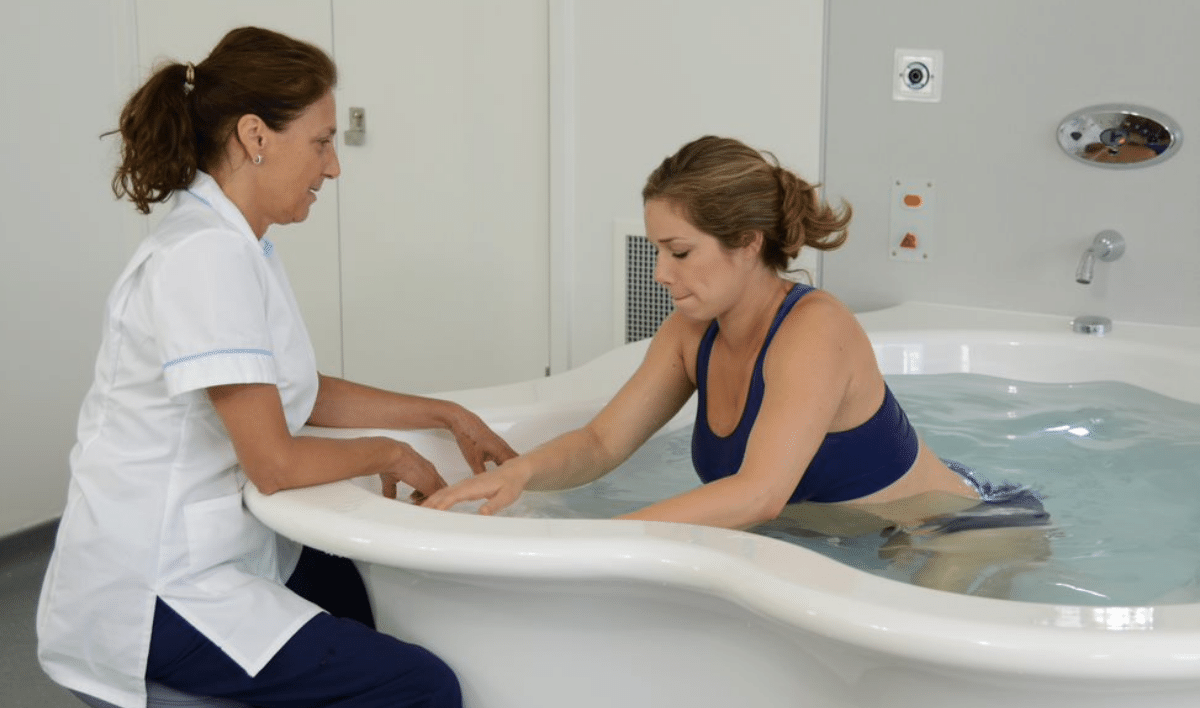Waterbirth provides “clear benefits” for healthy mums and their newborns, with less intervention and complications during and after the birth than standard care, as well as higher levels of maternal satisfaction. It finds a synthesis of the available evidence, published in the open-access journal BMJ Open.
 Water birth is when a woman is in labour and gives birth in a birthing pool. In this scenario, the newborn starts to breathe at the point when their head emerges from the water. Women may also choose to labour in the water and exit the pool for birth.
Water birth is when a woman is in labour and gives birth in a birthing pool. In this scenario, the newborn starts to breathe at the point when their head emerges from the water. Women may also choose to labour in the water and exit the pool for birth.
The researchers wanted to compare the healthcare interventions needed during and after birth between waterbirth, labouring in water, and standard care with no water immersion.
They searched research databases looking for relevant studies published between 2000 and 2021. Some 36 studies involving 157,546 women met the eligibility criteria and were included in the review. Most of the studies were carried out in obstetric units.
The studies included a broad range of interventions and outcomes.
These included: induced labour; artificial breaking of waters (amniotomy); stimulation of labour (augmentation); continuous fetal monitoring; opioid use; epidural use (pain relief injected into the lower back); pain; caesarean section; stuck shoulder (dystocia); tearing or cutting (episiotomy) in the vagina or area between the vagina and anus; (perineum); haemorrhaging after birth; manual placenta removal in theatre; infection (mother); mother’s satisfaction; Apgar score (assessment of baby’s wellbeing immediately after birth); newborn resuscitation; rapid shallow breathing of the newborn (tachypnoea); respiratory distress; admission to intensive care; newborn death; infection (newborn); umbilical cord snap (avulsion); breastfeeding.
The pooled data analysis of the study results showed that the use of water immersion in labour (regardless of whether women birth in or out of the pool) “has clear benefits to women” in obstetric units, where most births take place and where healthcare interventions and complications are more likely than in midwife-led units, note the researchers. Waterbirth was found to be as safe as giving birth on land for healthy mums and their babies.
Compared with standard care, a waterbirth significantly reduced the use of epidurals, injected opioids, episiotomy, as well as pain and heavy bleeding after the birth. It also increased mothers’ satisfaction levels and the likelihood of intact perineum. There was no difference in the rate of caesarean sections.
“Water immersion can significantly increase the likelihood of an intact perineum and reduce episiotomy, an intervention which can increase postnatal pain, anxiety, and impact negatively on a woman’s birth experience,” write the researchers.
There were more instances of umbilical cord snaps among waterbirths. However, the rate was still low: 4.3/1000 births in water compared with 1.3/1000 births with standard care. This may be linked to pulling on the umbilical cord when the newborn is brought up out of the water, suggest the researchers.

The researchers acknowledge that information on birth settings, care practices, interventions and outcomes varied considerably among the included studies, and few were carried out in midwife-led units or in the mother’s home, which may have affected the findings of the pooled data analysis.
But they conclude: “Water immersion provides benefits for the mother and newborn when used in the obstetric setting, making water immersion a low-tech intervention for improving quality and satisfaction with care.
“In addition, water immersion during labour and waterbirth alter clinical practice, resulting in less augmentation, episiotomy, and requirements for pharmacological analgesia. Water immersion is an effective method to reduce pain in labour, without increasing risk.” To strengthen the evidence base, future research should include factors that are known to influence interventions and outcomes during and after labour/birth. These include how many children a woman has already had, where she gives birth, who looks after her, and the care she receives, they add.
Research: Systematic review and meta-analysis to examine intrapartum interventions, and maternal and neonatal outcomes following immersion in water during labour and waterbirth doi 10.1136/bmjopen-2021-056517
Journal: BMJ Open
Ethel Burns, Claire Feeley, Priscilla J Hall, Jennifer Vanderlaan
Click here for PDF of the full systematic review and meta-analysis


I love how a birthing pool creates a private birthing space for the mum. This helps the mum to naturally feel safe and supported. It leads to a respect for the birthing mum and her wishes for the birth (which should always be present at birth).